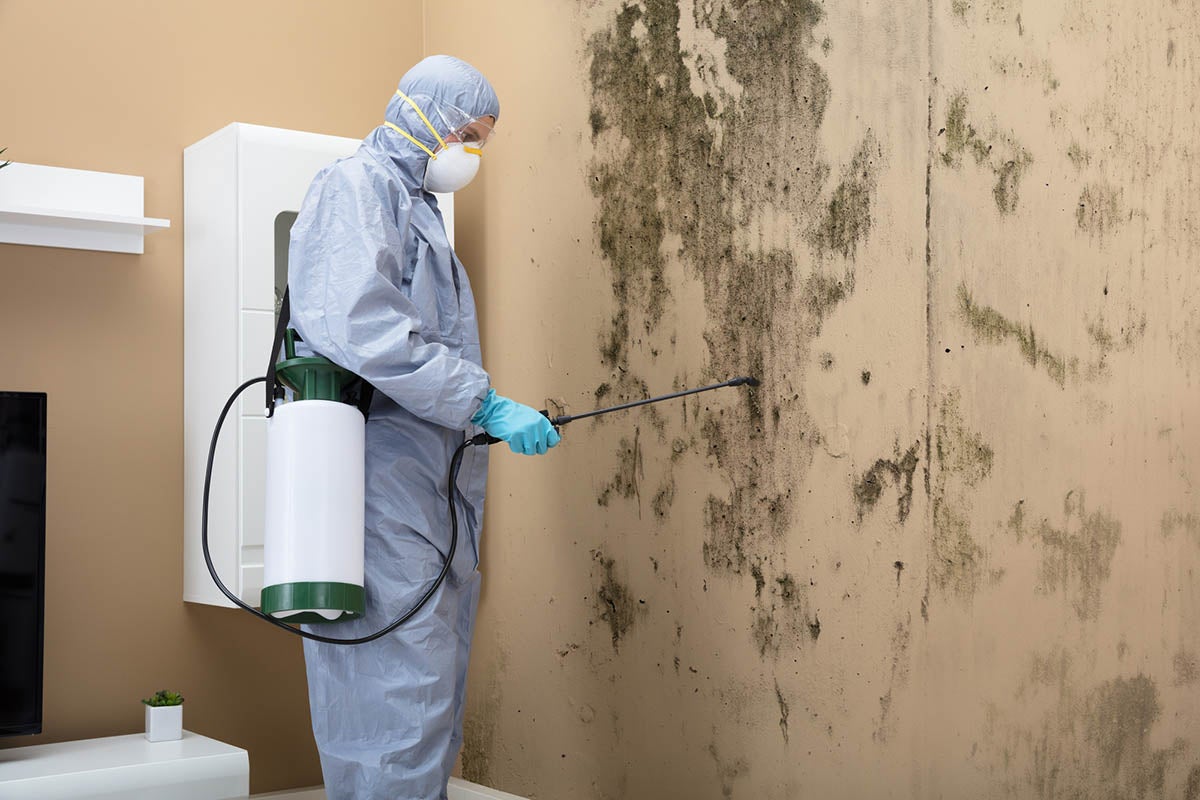Making Certain Post Remediation Verification Precision
Making Certain Post Remediation Verification Precision
Blog Article
Specialist Tips for Blog Post Mold And Mildew Remediation Success
In the realm of mold remediation, successfully removing mold and mildew is just half the battle; the true challenge lies in stopping its reappearance. By sticking to experienced suggestions and finest methods, individuals can protect their spaces against mold and mildew rebirth and maintain a healthy and balanced interior setting.
Monitor Moisture Degrees On A Regular Basis
Regular tracking of humidity degrees is vital in making certain the efficiency of message mold removal initiatives. After completing mold removal procedures, maintaining optimal humidity degrees is critical to stop mold and mildew re-growth and make sure a healthy and balanced interior atmosphere. Monitoring moisture levels permits very early detection of any spikes or fluctuations that might potentially result in mold renewal. High humidity degrees above 60% develop a helpful atmosphere for mold to flourish, making routine checking a positive procedure to stop any type of future mold and mildew concerns - what to do after mold remediation.
Additionally, developing a routine timetable for moisture checks, especially in risky areas such as kitchen areas, bathrooms, and cellars, is a proactive technique to mold avoidance. By consistently monitoring humidity degrees, building owners can successfully reduce the threat of mold reoccurrence and keep a healthy interior environment post-remediation.
Conduct Thorough Inspections Post-Remediation
Complying with the completion of mold removal procedures, it is essential to conduct thorough assessments to validate the effectiveness of the removal procedure. These post-remediation evaluations are critical in guaranteeing that the mold and mildew issue has been efficiently addressed and that there is no reoccurrence or continuing to be mold development. Examinations ought to be lugged out by qualified specialists who have expertise in determining mold and mildew and evaluating indoor air top quality.
During these assessments, numerous methods such as visual analyses, air tasting, and surface sampling might be used to extensively evaluate the remediated locations. Visual assessments involve a detailed evaluation of the facilities to look for any type of noticeable indications of mold growth or water damage. Air sampling helps in identifying the airborne mold spore levels, while surface tasting can detect mold and mildew particles on surface areas.
Implement Correct Air Flow Techniques
After guaranteeing the performance of the mold removal process via thorough assessments, the next essential step is to concentrate on applying proper air flow approaches. Appropriate air flow is important in protecting against mold reoccurrence by regulating wetness degrees and promoting air flow.
Correct ventilation not only help in avoiding mold and mildew development but likewise adds to the general health and comfort of passengers. By ensuring appropriate ventilation throughout the building, you can decrease the danger of mold regrowth and develop a much healthier living setting.

Usage Mold-Resistant Products for Repairs
To improve the long-lasting effectiveness of mold remediation initiatives, incorporating mold-resistant materials for repair work is crucial in minimizing the threat of future mold development. Mold-resistant materials are designed to hold up against wetness and inhibit mold and mildew growth, making them an essential selection for areas prone to wetness and humidity. When fixing areas influenced by mold, making use of materials such as mold-resistant drywall, mold-resistant paints, and mold-resistant caulking can aid avoid mold and mildew recurrence.
Mold-resistant drywall is an excellent option to typical drywall in locations like basements and shower rooms where dampness degrees are greater. When subjected to damp problems, this kind of drywall has an unique coating that resists mold growth even. Furthermore, making use of mold-resistant paints having antimicrobial agents can further inhibit mold development on walls and ceilings.
In areas where wetness prevails, such as shower rooms and cooking areas, making use of mold-resistant caulking around bathtubs, sinks, and home windows can help seal out water and prevent mold and mildew from holding in fractures and gaps. check out here By buying these mold-resistant materials during repair services post-remediation, you can significantly reduce the likelihood of future mold and mildew concerns and preserve a healthier indoor environment.
Maintain Cleanliness and Address Water Issues
After mold and mildew remediation, it is important to keep a clean atmosphere to protect against the regrowth of mold. Leaks, water invasion, or high moisture levels can produce the excellent breeding ground for mold and mildew, so it is crucial to take care of any kind of water-related problems right away.
To keep sanitation, think about making use of HEPA filters in vacuum cleaners and air cleansers to trap mold spores and prevent their flow in the air. Guaranteeing appropriate air flow in locations susceptible to moisture accumulation, such as cooking areas and washrooms, can aid maintain moisture degrees in check. By remaining alert about cleanliness and addressing water issues without delay, you can properly protect against mold and mildew reinfestation and preserve a healthy interior setting.
Final Thought

In the realm of mold remediation, efficiently getting rid of mold is only half the fight; the real challenge lies in avoiding its reappearance. After completing mold removal treatments, keeping optimum humidity levels is vital to prevent mold re-growth and ensure a healthy indoor atmosphere. High humidity levels above 60% create a favorable atmosphere for mold to prosper, making official site normal keeping track of a positive procedure to protect against any future mold issues.
To improve the lasting performance of mold remediation efforts, including mold-resistant products for repair services is essential in mitigating the threat of future mold growth. After mold and mildew removal, it is crucial to maintain a tidy setting to stop the regrowth of mold and mildew.
Report this page